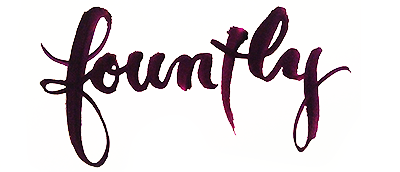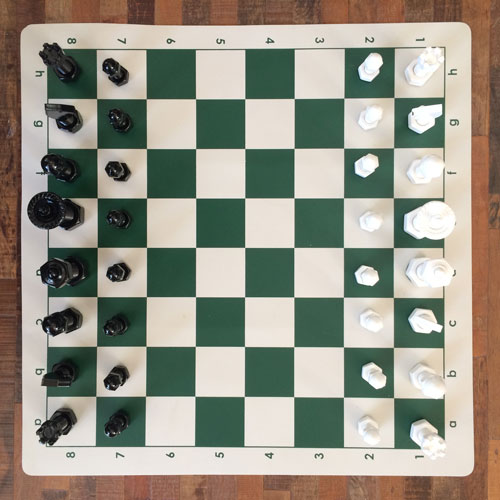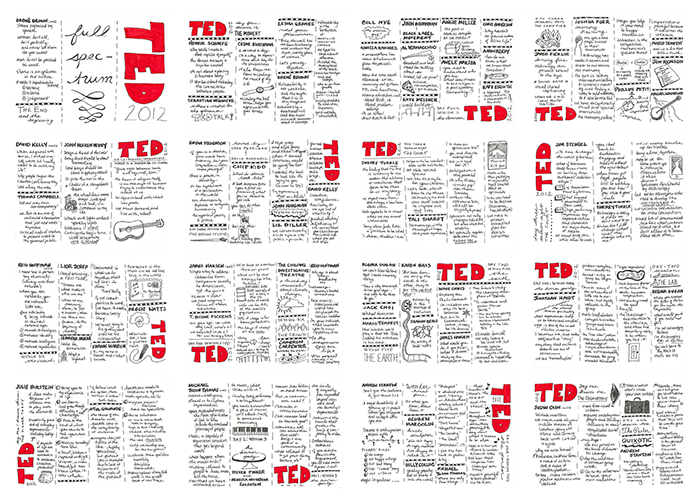What my Grandfather’s drill can teach us about designing business software
I come from a long line of blue-collar workers who helped keep New York City running smoothly in the mid-20th century.
My maternal grandfather, Anthony Paretti, was a New York City subway repairman who kept the trains moving safely and on time so people could get to and from work, school, and home. And my paternal grandfather, John Gould, worked for years as a repairman in New York City for the Otis Elevator company.
When my parents downsized their living quarters a few years back, my eight siblings and I helped sort through the stuff they’d accumulated over their almost 60-year marriage. Some things we donated, some we threw out, and some cherished things were divided among us: fine china, antique quilts, old photographs. What I kept was my Grandpa Gould’s old drill.
He used this drill to keep elevators running smoothly in buildings throughout Manhattan for many years. I love the drill’s clarity of purpose, its power, and its durability — his drill has remained in working condition for over half a century. I love his drill because it reminds me that making high quality tools for people is one of the highest leverage things we can do as designers.
Tools amplify human abilities
Sometimes we forget about the role that tools play in our lives. We take them for granted as we integrate them, fluidly and effectively, into our workflows and everyday lives: scissors, hammers, utensils, pencils. Other more complex and sophisticated tools, like medical devices, computer servers, 3D printers, and telescopes, let us reach well beyond what humans could ever accomplish without them.
My grandfather’s drill increased his physical capacity, so he could do things faster and better than he could have with his own, unaided physical strength. With his drill, he allowed people across New York to work and live far above the ground, way up in the sky. A few hundred years ago, this would have been unimaginable, but through the invention and use of many kinds of tools, it is now a commonplace part of the human experience. I think the term ‘tools’ has become so trite that it fails to convey the impressive potential they have to enhance the human experience and increase each person’s potential to do good things in the world.
This is even more true when we look at the impact and potential of digital tools. Software, especially when connected through networks, has the ability to amplify someone’s ideas and actions well beyond what a physical tool can do. Compare the potential audience of a physical megaphone to a YouTube video. Or a physical library to the Google Search engine. Or a physical scrapbook of photos to an Instagram feed. Physical tools and software tools are both valuable in their own right, but there is no denying that digital tools have a massive potential for global impact because they can be distributed so much more widely and efficiently than physical ones. Of course, with this potential comes great responsibility, both on the part of the inventor of the tool and also on the part of the person utilizing it.
Yet our understanding of the craft of digital tools is still in its infancy. The Cooper Hewitt National Design Museum recently mounted an exhibit called “Tools: Reaching Beyond Our Grasp,” which celebrates the design of tools throughout human history. The inventive utility of the objects in the collection is enormously inspiring, and some of the designs are also aesthetically breathtaking. The exhibit features everything from Stone Age hand axes made from rocks to 19th-century fishing implements to high tech space gloves designed for the Apollo space missions. But as I walked through the exhibit and later perused the full collection in the excellent printed catalog, I was not surprised by the absence of business software.
Unlike the objects in the exhibit, software designed for businesses are often sorely lacking in craft. One might think this lower bar of design quality doesn’t matter since relatively few people have to use these tools on a daily basis. But the lack of excellent business tools should alarm anyone interested in improving society’s most complex ecosystems, including government, healthcare, education, and advertising.
Why is business software so badly designed? And why should we care?
Unlike widely popular consumer products like Facebook, Instagram, YouTube, and Google, only a small percentage of the human population ever use business software, yet their use effects nearly everyone’s lives. They are used to manage budgets and human resources, procure goods and manage the bidding of contracts, transport goods and services, track the progress of students and patients, and help businesses plan and run marketing campaigns to connect their businesses, brands, products, and services to people around the world. Given the impact of these tools on our lives, it is all the more concerning that they are often very difficult to use.
It’s easy to assume that the experience of using these products is bad because there aren’t good designers working on them, but this is not necessarily the case. There are often passionate, talented designers who want to launch great products just as much as those working in consumer-oriented industries. Unfortunately, many things conspire to deliver poor user experiences.
Sometimes the companies developing business software are insufficiently staffed with design resources. Sometimes they don’t conduct enough user research to truly internalize the needs of their core users. Sometimes they have legacy backend systems that make it incredibly difficult to improve the UI, even in obvious ways. And sometimes the leadership in these companies has not adopted a design-led philosophy that prioritizes end-user experience. These influential but poorly designed products live in the shadows, where design quality is often not an imperative. Consequently, they can be bloated with features, suffer from complex and inefficient navigation, and fail to support core use cases. The resulting experiences are too often inefficient, ineffective, and disempowering.
This would be bad enough if people were only subjected to these experiences once in a while, like having to visit the Department of Motor Vehicles to renew your driver’s license. But for some jobs and occupations, people are obliged to use them many hours each day. Can you imagine if a consumer product you had to use many times a day was a miserable, inefficient experience? You’d revolt, change brands, find a better option. But when you are a junior assistant media buyer in an ad agency, or a nurse in the maternity ward, or a teacher in a public school system, you don’t have that kind of power or choice.
But it’s not just about sympathizing with those forced to use poorly designed software. It’s also about recapturing the waste that these inefficient and ineffective tools create. It is hard to calculate the amount of financial and human capital lost through the use of these tools, capital that could be reinvested in better products and services, job creation, and general economic development. This is a hugely exciting opportunity for designers to create not just interesting products, but products that address some of society’s biggest challenges.
The beauty of the beginner’s mind
Three years ago when I joined Facebook to lead the Business Design team, I had no experience designing business software. I’d spent most of my career building consumer applications and experiences like YouTube and Google Search. I’ll admit I was nervous when I started because this work was in some ways far more complex than consumer design. I worried that my lack of ad tech experience would make it hard for me to have the impact I wanted to have. But I could see that improving the quality of business products was one of the biggest levers for improving the experience of using Facebook, by making marketing more relevant and more valuable. Can we even imagine a world where we only see highly relevant marketing messages? Ads that are attuned to our interests, needs, and lives? We are so awash in irrelevant and interruptive advertising that this can be hard to envision, but I am excited to build tools that help make it a reality.
And over time, I realized something even more important: the fact that I wasn’t a domain expert allowed me — and many members of my team who also don’t have an ad tech background — to approach these problems with fresh eyes, unencumbered by “how things are supposed to work.” The beginner’s mind, combined with the expertise of many colleagues who have deep domain knowledge, is a winning combination.
We still have a long way to go to consistently achieve our own aspirations for the quality of products we want to build. There is no denying that it has been a steep learning curve, but if I’m not learning, I’m not growing, and I still hope to grow a lot more before I’m through. Over the years, I’ve learned that there is no free lunch when it comes to having a big impact, and that the constraints and complexities of this work feel like a fair price for the positive change we hope to create in the world.
Moving forward, there’s a lot that my team and I want to share about the things we’ve learned in hopes that others can apply it to their work. And we’d love to engage other teams and companies looking to raise the bar of quality in business software in conversations that help all boats rise with the tide. I believe that if we do our jobs right, then just like my grandfather’s drill, the tools we design can have a huge positive ripple affect in the world. It’s challenging and exhilarating work, and we are very much at the beginning of the journey. I hope many more members of the design community decide to join us.





















